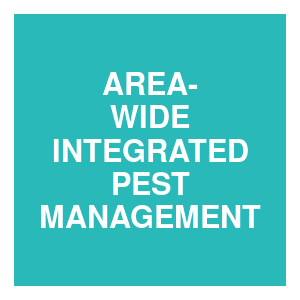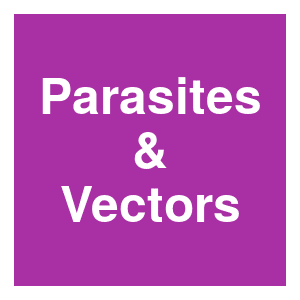
Keywords: South Africa

|
Area-wide management of mediterranean fruit fly with the sterile insect technique in South Africa: New production and management techniques pay dividendsVenter, J. H., Baard, C. W. L., and Barnes, B. N., AREA-WIDE INTEGRATED PEST MANAGEMENT: Development and Field Application, 2021.
A mass-rearing facility to produce sterile male Mediterranean fruit flies, Ceratitis capitata (Wiedemann), for a Sterile Insect Technique (SIT) programme in the Hex River Valley in the Western Cape Province started in the late 1990s. The programme was initially underfunded and ... Keywords: Anopheles, arabiensis, SIT, South Africa, sterile insect technique |

|
The suppression of the False Codling Moth in South Africa using an AW-IPM approach with a SIT componentN. Boersma, AREA-WIDE INTEGRATED PEST MANAGEMENT: Development and Field Application, 2021.
The false codling moth, Thaumatotibia leucotreta (Meyrick) (Lepidoptera: Tortricidae), is native to subSaharan Africa, where it infests various commercial, and wild, fruit-bearing plants. This major pest is not present in the Americas, Europe, and Asia, and therefore has ... Keywords: Anopheles, arabiensis, SIT, South Africa, sterile insect technique |

|
“Maskandi experience”: exploring the use of a cultural song for community engagement in preparation for a pilot Sterile Insect Technique release programme for malaria vector control in KwaZulu-Natal Province, South Africa 2019P. N. Manana, S. Jewett, J. Zikhali, D. Dlamini, N. Mabaso, Z. Mlambo, R. Ngobese and G. Munhenga, Malaria Journal, 20:11. 2021.
Background An assessment of the Sterile Insect Technique (SIT) as a complementary malaria vector control tool, is at an advanced stage in South Africa. The technique involves the release of laboratory-reared sterilized male mosquitoes of the major malaria vector Anopheles ... Keywords: Anopheles, arabiensis, SIT, South Africa, sterile insect technique |

|
Estimates of the population size and dispersal range of Anopheles arabiensis in Northern KwaZulu-Natal, South Africa: implications for a planned pilot programme to release sterile male mosquitoesM. L. Kaiser, O. R. Wood, D. Damiens, B. D. Brooke, L. L. Koekemoer and G. Munhenga, Parasites and Vectors, 14:18. 2021.
The Anopheles gambiae complex and An. funestus group species made up the majority of wild collections along with other anophelines. The An. arabiensis population size was estimated to be between 550 and 9500 males per hectare depending on time of year, weather conditions and ... Keywords: Anopheles, arabiensis, SIT, South Africa, sterile insect technique |

|
Community Engagement Prior to a Small-Scale Pilot of the Sterile Insect Technique in Kwazulu-Natal, South Africa 2018P. N. Manana, J. Zikhali, D. Dlamini, S. Gumede, N. Mabaso, T. Mpungose and G. Munhenga, Journal of Public Health and Disease Prevention, 2. 2019.
Approximately 165 000 listeners were engaged during two 30 minute radio interviews at a local radio station. Two hundred and fifty farm workers, several outpatients from primary health care facilities and 1400 secondary school pupils were given education on malaria transmission ... Keywords: Anopheles, arabiensis, SIT, South Africa, sterile insect technique |

|
Sterile insect technique field trials to eliminate malaria under wayAnonymous, SA Department of Science and Innovation, 2018.
The first South African research trial for the biological control of mosquitoes using the sterile insect technique started in Jozini in KwaZulu-Natal earlier this month, with funding from the Department of Science and Technology. South Africa is making significant progress in ... Keywords: Anopheles, arabiensis, SIT, South Africa, sterile insect technique |

|
Mating competitiveness of sterile genetic sexing strain males (GAMA) under laboratory and semi-field conditions: Steps towards the use of the Sterile Insect Technique to control the major malaria vector Anopheles arabiensis in South AfricaG. Munhenga, B. D. Brooke, J. R. L. Gilles, K. Slabbert, A. Kemp, L. C. Dandalo, O. R. Wood, L. N. Lobb, D. Govender, M. Renke and L. L. Koekemoer, Parasites and Vectors, 9:122. 2016.
Anopheles arabiensis Patton is primarily responsible for malaria transmission in South Africa after successful suppression of other major vector species using indoor spraying of residual insecticides. Control of An. arabiensis using current insecticide based approaches is proving ... Keywords: Anopheles, arabiensis, SIT, South Africa, sterile insect technique |

|
Evaluating the potential of the sterile insect technique for malaria control: relative fitness and mating compatibility between laboratory colonized and a wild population of Anopheles arabiensis from the Kruger National Park, South AfricaG. Munhenga, B. D. Brooke, T. F. Chirwa, R. H. Hunt, M. Coetzee, D. Govender and L. L. Koekemoer, Parasites and Vectors, 4:208. 2011.
The successful suppression of a target insect population using the sterile insect technique (SIT) partly depends on the premise that the laboratory insects used for mass rearing are genetically compatible with the target population, that the mating competitiveness of laboratory ... Keywords: Anopheles, arabiensis, SIT, South Africa, sterile insect technique |

Contact
David O’Brochta
Foundation for the
National Institutes of Health
geneconvenevi@fnih.org
RSS

